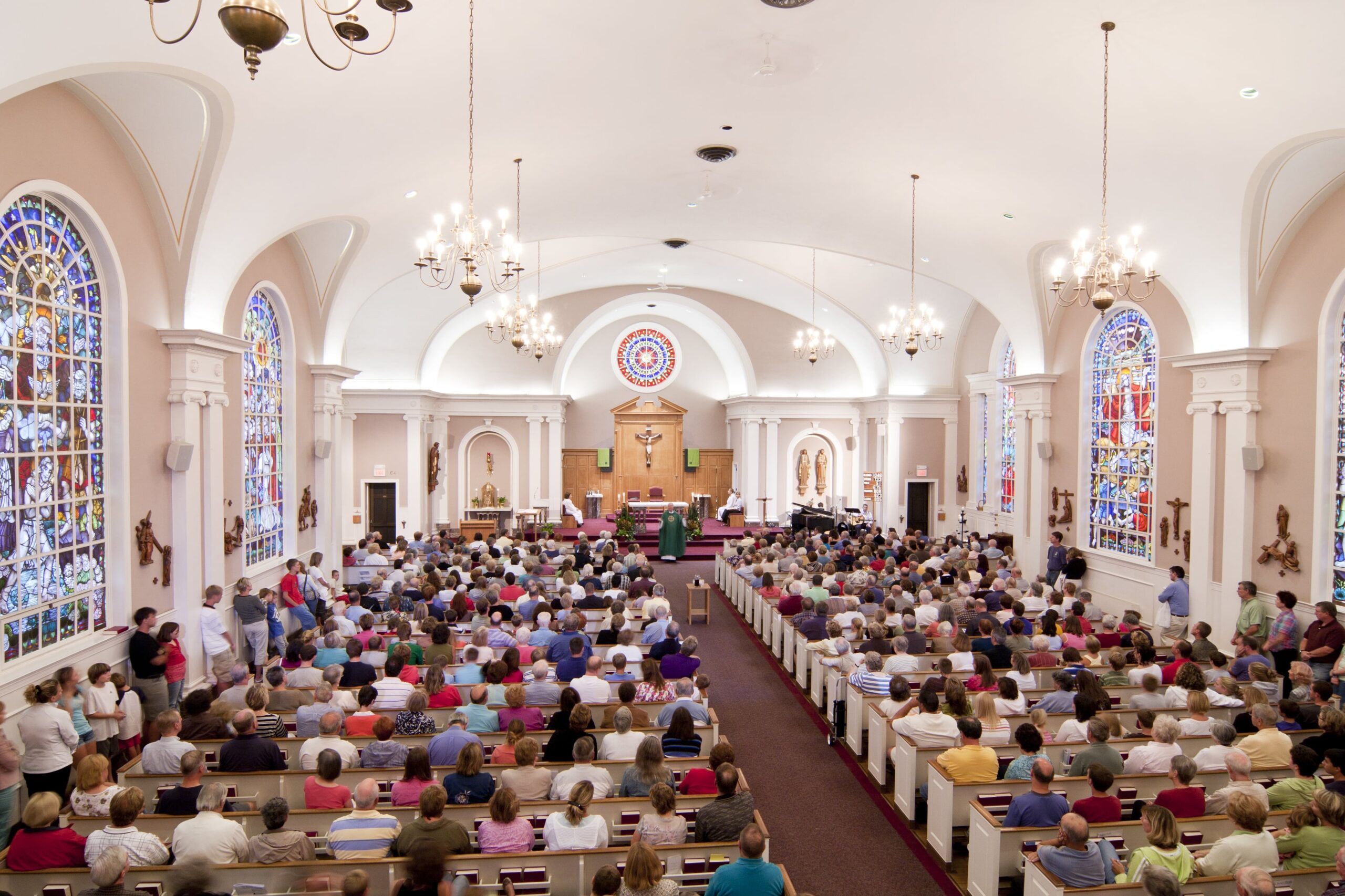Build Bi-Racial Empathy with MissionInsite™
By: Tom Bandy
This is my new blog about using MissionInsite for community research and church development. Available exclusively to ACS Technologies® and MissionInsite subscribers. I hope you will join regularly as we explore how churches can become really relevant to the people within their reach.
Churches of all traditions and denominations have worked hard over the past 70 years to bridge racial divides and encourage reconciliation. The locations with the best potential are usually established churches in neighborhoods that have been overtaken by urban expansion. Aging Euro-American households are being replaced by Afro-American and multi-cultural households.
One positive result of the COVID-19 pandemic is “new neighborliness”. Unable to work, play, or travel, neighbors are actually talking with neighbors. They are leaning over the fence, harmonizing between apartment balconies, running errands, and dropping off groceries, and encouraging one another as never before. Ironically, social distancing has opened opportunities for new friendships.
Yet the dream of truly bi-racial congregations has generally eluded our efforts. Many church leaders ask: What can we do? This is not the first question to ask. The first question is: Who can we befriend?
You must engage, immerse, listen, appreciate, and yes, even enjoy a relationship with someone outside your normal circle. This is not accomplished through committees, task forces, town meetings, or public debates. It is accomplished by making one friend at a time in daily living.
To be friendly, you must get friendly.
When you complete a ComparativeInsite Report (comparing lifestyle representation among member households to lifestyle representation in the wider community) you will inevitably observe marked disparities. Older, more white churches in urbanizing communities may believe they are very friendly but discover they are not very welcoming to many of their neighbors. In particular with neighbors of another color or culture.
Use MissionInsite to create a thematic map of lifestyle representation in the community. This color-coded map will reveal the exact streets or neighborhoods where people in any given lifestyle segment live. Additionally, you can see the exact neighborhoods where you have the highest density of member households and where you don’t. This is often just across the street.
Experian lifestyle descriptions will reveal the realities of parenting, the cost of living, and other facts of life. The preferences they have for food, recreation, media, and even provide a snapshot image of a typical household that gives you a window through which you understand their lives. You can compare this with the descriptions of lifestyle segments well represented in the church.
The MissionImpact Mosaic Application Guide will help you identify lifestyle segments most likely to build friendships with other lifestyle segments. For example, D18 Suburban Attainment is a lifestyle segment that includes many upwardly mobile Afro-American households who are moving into neighborhoods that have been overtaken by urban expansion and more recently populated by aging Euro-American seniors. These seniors are now minorities in the community, but often majorities in the church. Even if they want to befriend incoming D18 black households, the cultural gap is often too great.
Although, the good news is that many of these urban churches also include minority lifestyle segments who are building friendships and can be the bridge to greater neighborhood empathy. The chart below is from MissionImpact Mosaic Application Guide report for D18 Suburban Attainment. (This chart is found in reports for all 71 lifestyle segments currently identified by Experian in the US). It reveals the potential for building relationships in your community.
Potential Influence:
| Lifestyle Compatibility | Family Group D
Suburban Style
|
Frequent Neighbors |
| B07 Generational Soup
I31 Blue Collar Comfort H26 Progressive Potpourri |
D15 Sports Utility Families
D16 Settled in Suburbia D17 Cul de Sac Diversity D18 Suburban Attainment |
052 Urban Ambition
N48 Rural Southern Bliss F22 Fast Track Couples |
In my consulting work in urban centers across the country, I have observed that many aging, declining, Euro-American churches are overtaken by urban expansion.
These churches have the potential to build bi-racial relationships in 3 ways:
1. Build friendships via relationships in the same Family Group (in this case called Suburban Style.)
-
- Established churches often do include households from D16 Settled in Suburbia of the same family group as D18 Suburban Attainment. They are well educated older families and empty nesters living close enough to downtown to take advantage of cultural opportunities, and far enough to escape the traffic. Additionally, they may serve on the boards of non-profits. They appreciate black culture, and they are apt to sustain bi-racial friendships in the context of social services and cultural events.
2. Build friendships with people living in close proximity.
-
- Established churches often include households from F22 Fast Track Couples. These are young singles and couples living fashionable lives in urban neighborhoods. Some are in new apartment buildings; others might be renovating homes. Furthermore, They value cross-cultural experience and bi-racial friendships and may frequent the same restaurants, coffee houses, gyms, and parks as D18 Suburban Attainment. They may live in a theological blur, but they can be all-in for social justice. Look closely and you will see them marching right beside their D18 friends in protest.
3. Build friendships through lifestyle compatibility.
-
- Established churches often include households from B07 Generational Soup. They may be a mix of cultures and languages, but they share many attitudes and habits with D18 Suburban Attainment. Extended families, cultural roots, economic and career ambitions, negative experiences of discrimination, and a desire for equality, a passion for community safety, and much more. They participate in the same PTA’s, chat in the same long waiting lines, play at the same community centers.
The creation of bi-racial or multi-cultural congregations is a two-step process:
1. Build Friendships
-
- The Euro-American seniors may not be able to do this, but there are often minority lifestyle segments already in the congregation who can. These are the ones who share similar lifestyle preferences, expectations, ambitions and concerns. They are more likely to invite their bi-racial and multi-cultural friends to church programs that include music, food, and fun; and are more likely to join their bi-racial and multi-cultural friends in social services, public education, and protest marches.
2. Adapt Programs
-
- The Euro-American senior church members may not know what to do, but they can give permission to do it. They can empathize with the needs and hopes of people of color. Minority lifestyle segments in the congregation like D16 or F22 or B07 can draw people of color into membership, but only the majority of seniors can invite them into leadership. They can include them on boards and trustees to set policy and adapt programs. The most successful attempts I have seen to create bi-racial and multi-cultural congregations eventually involve Euro-American seniors giving away authority and responsibility for both personnel and property to younger generations and their bi-racial and multi-cultural friends.
The Euro-American aging seniors in many churches overcome by urban expansion genuinely want to be bi-racially welcoming but don’t know what to do or where to start. So look to the other lifestyle segments in your church to build bridges of friendship. It’s not about programs but relationships.
In conclusion, the greatest weapon against racism is empathy. As the Bible says: The harvest of righteousness is sown in peace by those who make peace.
I welcome any and all questions about using MissionInsite for ministry planning and leadership development.
You can reach me at tbandy@acst.com.
Want to read more from Tom Bandy:
HOW TO USE PRE-DEFINED REPORTS TO GROW YOUR
WHAT IS A “LIFESTYLE SEGMENT” AND WHY SHOULD I CARE?
PROBABILITIES, LIKELIHOODS, AND REALITY TESTING IN YOUR CHURCH’S COMMUNITY




